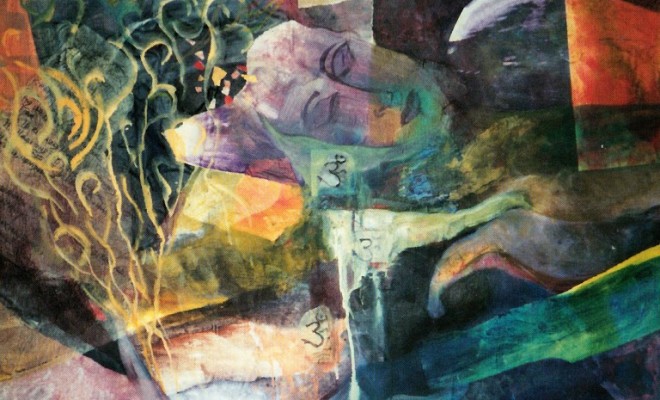 PHOTOGRAPHY: Sara Roizen archive
PHOTOGRAPHY: Sara Roizen archive
A therapy of art
“As a mother of children under the age of three, I’m getting better at finding ways to create when and where I can,” says Sara Roizen, an artist, licensed art therapist and a mother of two. Most recently, Sara has focused her art as therapy work with adults living with HIV/AIDS, substance use, mental health issues, and homelessness. Llamas’ Valley tries to find out how one woman can find enough time for everything when she only has 24 hours a day as we all do.
How and how long ago have you started creating mandala art? Why did you choose this type of art?
First it might be helpful to define what the mandala art is. ‘Mandala’ is a Sanskrit word that means ‘circle.’ Mandalas have been spiritual symbols in many religions and cultures but are probably most widely known for their ritualistic and spiritual use in Buddhism, where they represent the universe and are used as a centering form of meditative practice. The famous psychoanalyst Carl Jung is known for creating his own mandalas and introducing mandalas to the West as a symbol of wholeness and a representation of the artist’s psyche. I am most fascinated by Jung’s utilization of the mandala as a means of self-discovery and self-reflection.
I don’t recall a time when I consciously decided to start working with mandalas. In a way it’s almost as if mandalas chose me, and just started emerging in my drawings and paintings. I’ve been drawn to working with circles for years and even recall creating mandalas in high school. After the birth of my first son I decided to start a small mandala journal as a way to visually capture my transition into motherhood. I have continued to explore mandalas in different mediums and materials such as wood burning and vinyl record mandalas.
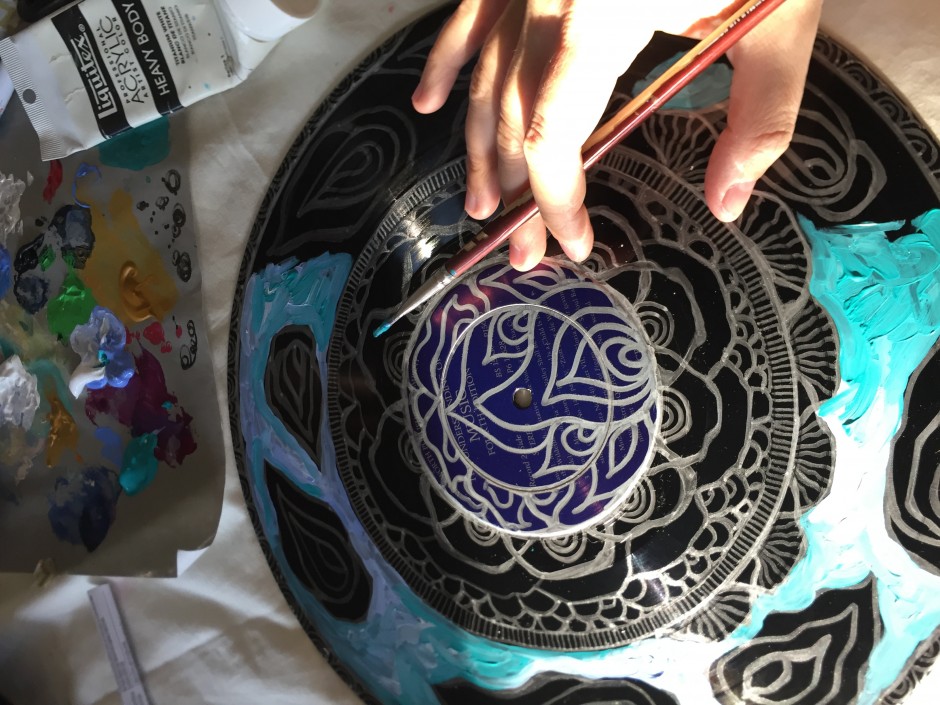
How did you come up with the idea to create mandalas on vinyls?
I started painting on vinyl records a few years ago when my husband started bringing home test press records from the music company where he worked. He had access to piles of records that were just going to be thrown out and had the idea that I might enjoy them as a painting surface. He was right. I love that they are a strong support but also have some flexibility. They can be easily hung on the wall by simply placing a little nail where the center hole is. They can spin and therefore have a dynamic quality. The grooves in the vinyl create different effects with the paint and markers depending on how close or far away from the center the groove is. I also liked the idea of re-purposing these records and saving them from the landfill.
How did your very first vinyl mandala look like?
I believe my first vinyl mandala was created with acrylic paint and silver paint marker. I started with an acrylic background of blended purples, blues, and greens. I then created an intricate drawing used a silver paint pen over the painted background. I enjoy the combination of acrylic paint and paint pens. The paint adds range of color and texture, while the paint pens allow me to go in with detail.
What other material do you use for your works?
I do a lot of pen drawings, watercolor, acrylic, and mixed media. Many of my paintings integrate acrylic paint with texture mediums such as sand paste, modeling paste, pouring medium, and pumice gel. I’ll often incorporate found objects such as gathered sea glass into my paintings. I also love wood burning and have been using this method for a long time. I’m currently working on a series of wood burned mandalas. My drawings tend to be detailed and highly patterned, while my recent paintings play around with layers, textures, and washes of color. However, painting on vinyls is one of my favourite forms of art making. It’s like combining music and painting into one.
Does music make any influence for you artworks?
I often have music playing while I make art and I believe that the music naturally feeds into the artwork on many levels. I have deliberately utilized music to inspire my imagery in the past as well. In my work as an art therapist, I have utilized music during open art therapy studios or encouraged my clients to create art as a feeling response to the music. I have been drawn to Wassily Kandinsky’s paintings for many years. He wrote extensively about the impact of music on his paintings in a book called Concerning the Spiritual in Art (1912), in which he explores the integration of musicality and spirituality in art: themes such as composition, harmony, and improvisation. I love his exploration of the two modalities and the spiritual elements that they evoke for him. For me, visual art and music are often intertwined in practice and as mutual sources of inspiration.
What is your own relationship with music?
Music has been an integral part of my life since I was a child. My parents say that from a young age I was even fascinated by the music in movies, and enjoyed identifying the moods evoked by the musical scores. I played flute during middle school and high school and was especially drawn to jazz and improvisation. I have also enjoyed tribal drumming for years and hope to take drum set lessons down the road. Like art, music is a form of self-expression for me. I had to decide between studying art or music therapy in graduate school. I was drawn to both modalities, but eventually chose to become an art therapist because it was my most used form of expression. I have been fortunate to work alongside some incredible music therapists and their work in the field inspires me.
What do you usually think about while painting? What makes you concentrate?
When I first begin to paint, my mind hops all over the place as it does during most of my day. Sometimes I catch these different trains of thought but I’m sure many of them are unconscious - one train of thought leading to the next and so on. Usually when I sit down to paint I notice many judgments and conflicting thoughts about what I should be doing. Often I feel pulled to leave my studio and get back to the pile of mail or dishes that I’ve left downstairs. However, as I begin to settle into making art I usually find that my mind starts to quiet down. The rhythm of creating lends itself to a different mind space. In this way, I feel that my art making is a form of meditative practice.
Do your works have specific stories, hidden messages?
I wouldn’t say that my work has ‘hidden’ messages or even specific stories. It would be more accurate to say that my work is a reflection of my feelings and experiences at the time of creation. I can look back at my art from different stages of my life and remember what I was going through at the time. I’ve also noticed that my color palettes are very telling. During darker times in my life, my palette has reflected that with darker and richer colors and during smoother times the colors I used are often brighter and lighter.
What made you choose to designate your life for creativity?
Like many children, I was naturally drawn to art and creating things. I think most of us create as children but then for some reason, many of us stop making art after a certain age. In my case, I just felt a drive to keep creating.
I have two boys - a 2.5 year old and a 6 month old. I’m fascinated by the uninhibited way my toddler creates. Occasionally he will hang out with me in my studio and create art alongside me. He tends to move from one art material to another - for example, acrylic painting, to oil pastels, to stickers, and to watercolor. He just follows his impulses and interests in the moment, and that is what I find myself doing when I’m in the flow of creating.
I’m inspired by so many things - everyday experiences, nature, my art therapy clients, other artists, my children, my husband (who is a very talented photographer), music, film, and all of the little moments that make up life.
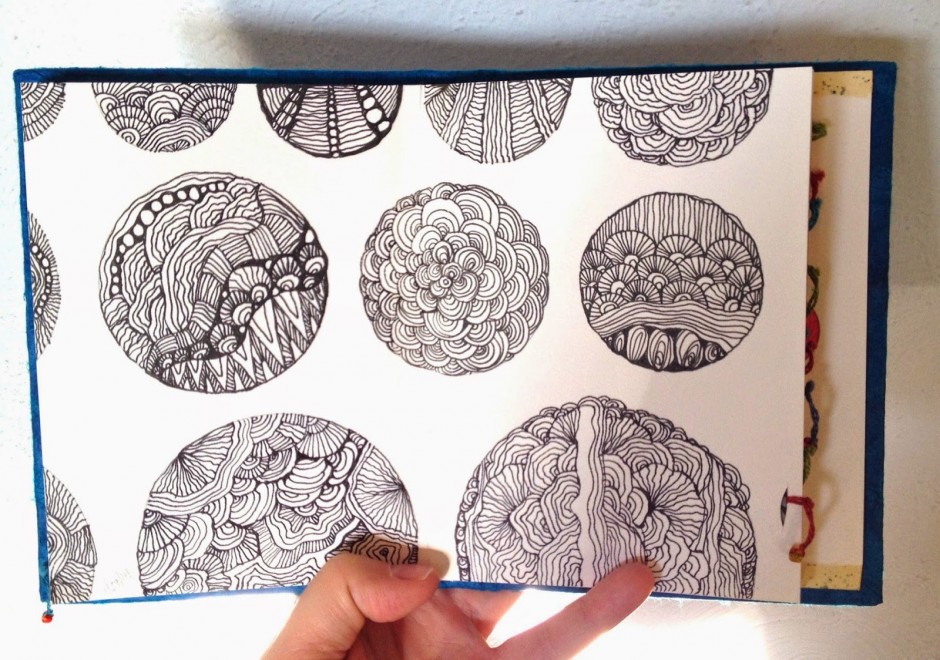
How have your artworks and style changed since you started?
There are some reoccurring themes and imagery in my work that continuously emerge in different variations. My work has always been highly process-oriented. For me, this means that I don’t begin a piece with a specific image or end idea in mind. I let myself work freely and intuitively and let each step of the piece inform the next.
I tend to work in different bodies of work and circle back to certain styles or ways of working. If you click around the different galleries on my art site, you will see that there are certain groupings of work such as figurative based, textured abstract work, and works on paper. My process is constantly changing and my imagery shifts over time, but my dedication to being spontaneous and playful in the studio has remained the same over the years.
As well as being a freelance painter you also work as an art therapist, right? Is your art work some kind of therapy too?
Yes. For me art is a personal form of therapy. The act of creating art is healing. Many years ago I realized how transformative the creative process could be. When I was struggling I could return to my art materials and release the feelings onto paper or canvas. Art is not just useful in times of struggle but also to express times of joy, transition, and mystery among other things.
There is a beautiful passage from one of my favorite books called Art Is A Way of Knowing by artist and art therapist Pat B. Allen. She writes: “Art making is my way of bringing soul back into my life. Soul is the place where the messiness of life is tolerated, where feelings animate the narration of life, where story exists. Soul is the place where I am replenished and can experience both gardens and graveyards. Art is my way of knowing who I am.”
This passage perfectly describes my experience of making art and the reason I feel compelled to continue creating. Creating art helps make meaning of my daily life and also feeds my spirit.
So you definitely believe that painting heals? What, in your opinion, is so magical about it?
I most definitely believe that painting heals. Painting and art making have been my constant companions and guide through challenging and emotional times and will continue to be. Art heals and it also enriches my life. I became an art therapist because I experienced the healing qualities of art making personally and I wanted to learn how I could help others tap into the same experience and process. In addition to helping us heal, I believe that art enriches daily life and helps us access deeper levels of understanding and self-knowledge.
In terms of mental health, our country is largely driven by the medical model, which focuses on what is wrong with the person. As an art therapist, I work with individuals to see what is right with them. We honor the broken places but also seek the places of strength and resilience - by focusing on the unique creative potential in each person. Art making can help us to reimagine ourselves and see facets of the self that were previously hidden or ignored. Art making also helps us to creatively problem solve, navigate setbacks and frustrations, and connect with others in a non-verbal process.
Do you believe there’s a special atmosphere or mood needed for people to be creative?
I personally don’t usually need to be in a special mood or setting to create. Over the years I have created in many places; from actual studios, to kitchen tables, in my bedroom, on the subway on the way to work, or while holding one of my children in the other arm. As a mother of two children under the age of three, I’m getting better at finding ways to create when and where I can. That being said, the most conducive place to sit down for long periods of creating is my studio - preferably with a few hours of uninterrupted time.
What does your work studio look like?
We moved into our house a little over a year ago, and the former owners converted the attic into a beautiful finished space on the third floor, which I use as my studio. It doubles as a guest bedroom and there is even a bathroom attached, which is perfect for cleaning my paint brushes. It’s a meditative, inspiring, and peaceful studio space, and I feel so fortunate to have it. Since it’s on the third floor it feels like a tree house to me, and it gets beautiful light from multiple windows. My favorite time of day to create is what I have always called ‘the golden time of day’ - an hour or so before the sun sets when the light is warm and golden.
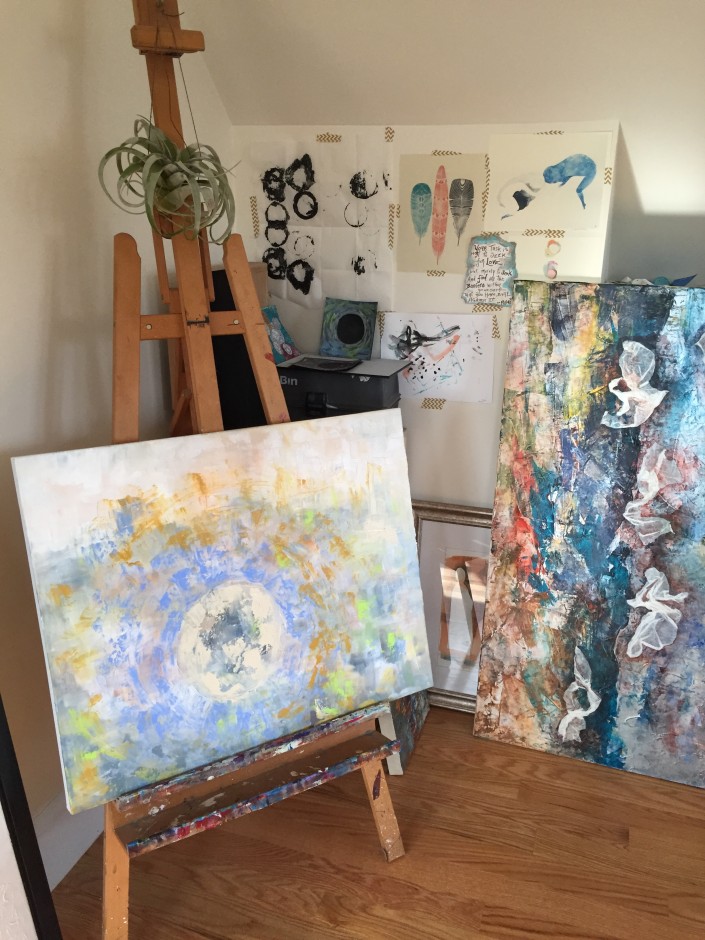
Do you have any funny stories related to your artworks?
My husband jokes that I’m not always the best salesperson of my own artwork. A few years ago a couple were looking to buy one of my paintings. They were intrigued by one of my larger abstract pieces. I had painted it with a palette knife and it was a textural piece with layers of deep blues, reds, and purples. They asked me what I had been thinking about while painting it, and I replied honestly that I had painted it right after our beloved cat had died as a way to express my sadness. They very politely asked to look at some other paintings and eventually chose one with a slightly happier story. That’s the thing about my work - I always need to paint what I’m feeling, even if I’m not conscious of the feelings when I create the piece. That’s the beauty and the joy of working the way I do.


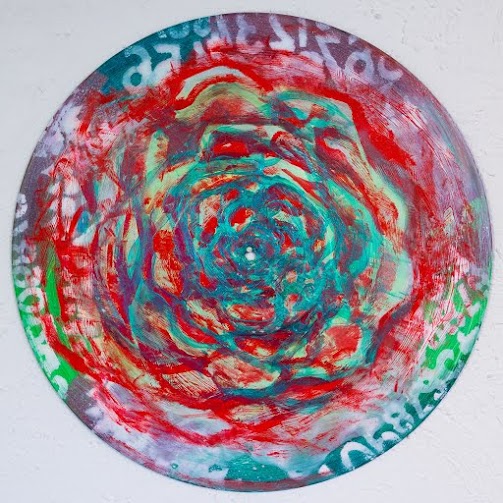
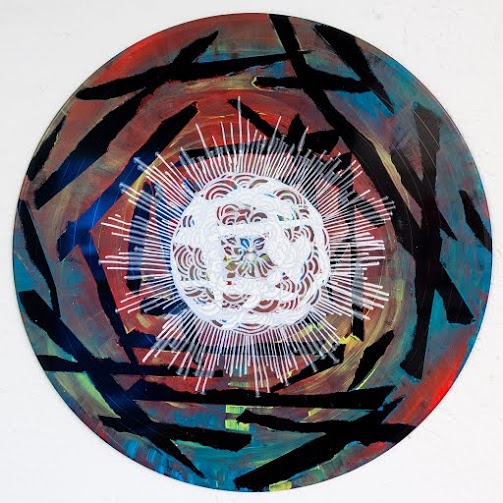

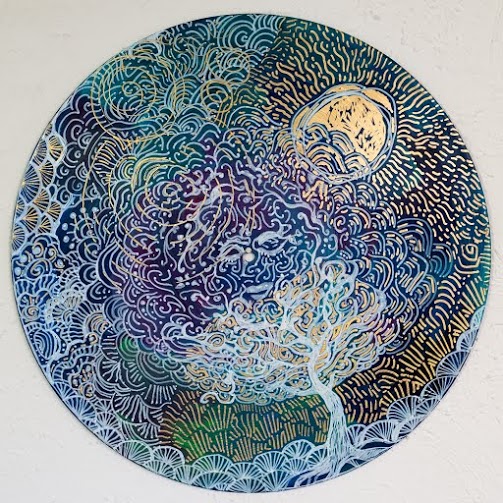
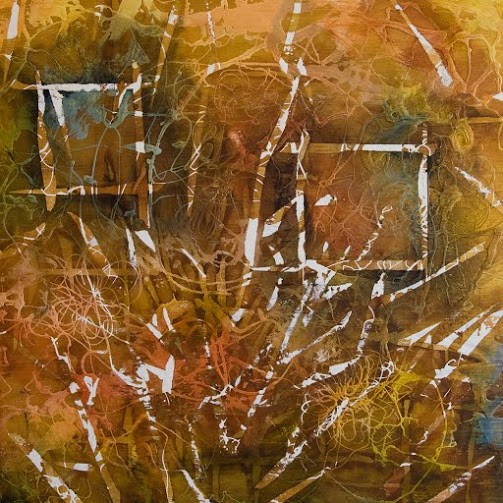
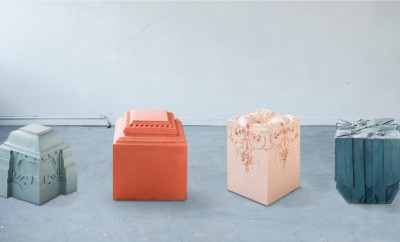
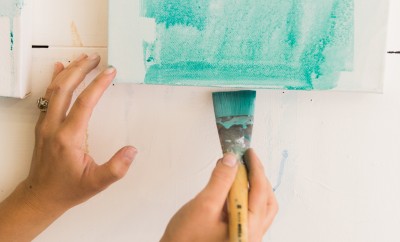
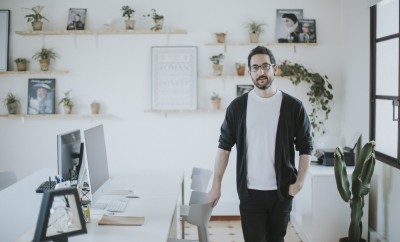

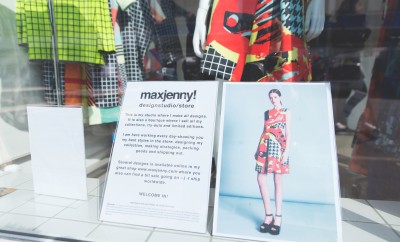

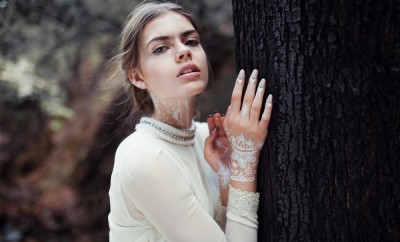
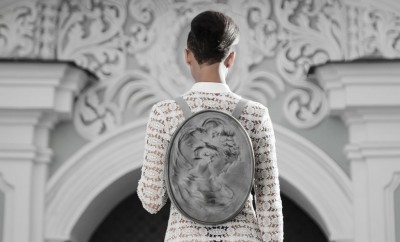

You must be logged in to post a comment Login